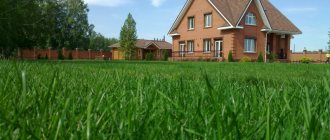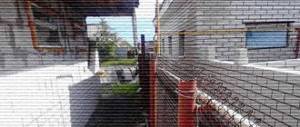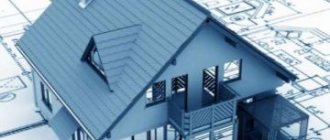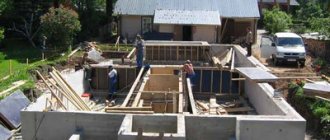Being the owners of private houses, the owners add additional facilities to them. Not every homeowner knows that an extension must be documented. Upon completion of construction or if you want to sell a house, the question arises: how to legalize a building that you built yourself?
What is included in the extension category?
An extension is considered an addition to the house that is not planned by the existing project. Due to the extension, the area of the main building increases. It is attached to the walls of the house and can be of any size and number of floors. This type of extension is called capital; additional land is required for its construction. It requires a mandatory permit, which is issued by the municipality.
Non-permanent buildings include buildings that are of an auxiliary nature, do not have a foundation and are unsuitable for habitation. They will not need to obtain permission before starting construction. Once the construction is completed, it is necessary to make changes to the existing documentation.
How to legalize an extension to a house - nuances of legal aspects
How to legalize an extension to a house, at what stage is it better to do it? It is quite difficult to foresee initially what a house will look like in a few years. Because if there is a free plot of land, there is a great temptation to redevelop and expand the living space. The same situation happens if new owners buy a house. How to do everything according to the law so that there are no claims from the state?
The second option provides for the start of the legalization process after the completion of construction, in fact. The main emphasis is on the possibility of obtaining supporting documentation. Both options involve going through the same stages of legalization.
Procedure for legalizing construction
If a structure is planned and has not yet been built, it is necessary to seek legal advice to avoid problems in the future. Next, you need to consult with the design organization about the construction project so that it meets all the necessary requirements and standards.
After all consultations, you can begin the construction phase and collect all the documentation that is required:
- Legalizing a non-permanent extension will not be particularly difficult; to do this, you need to make appropriate changes to the existing technical documents:
- To do this, you should contact the BTI.
- If there is more than one owner in the house, then it is necessary to provide consent (in writing) of all owners of the premises.
- As soon as the BTI finishes making changes to the documents, the procedure can be considered completed.
- A major extension can be legalized before and after construction. In the first situation, construction is carried out according to an already existing project and the owner has all the permitting papers in hand. In this case, its construction occurs legally:
- For this to happen, you first need to collect all the necessary papers and submit them to the architecture department in the local municipality. If the papers are in complete order, then the authorities will issue the appropriate approval.
- The last step will be to pay the state fee and visit Rosreestr to register the extension.
- To legitimize an unauthorized building, if the administration has not issued a permit, you must proceed as follows:
- Collect the required papers.
- Appeal to the court. The collected documentation is accompanied by a statement of claim for recognition of ownership rights to a building built independently. The plaintiff will be the owner of the land and the main building, and the defendant will be a representative of the administration. The judge may require the written consent of all persons registered in the premises. Once permission is received, you can move on to the next stage.
- It is necessary to contact the appropriate authority that deals with issues related to registration of new ownership of the premises. Civil servants will issue a receipt with the amount required to pay for the extension. The state duty is calculated in accordance with the Tax Code.
How to obtain permission to add an extension to a private house
Rarely do any homeowners think about how to legalize an extension to a private house. After all, most of them are accustomed to independently managing their property. Therefore, having decided to increase the area of a private house, the owners arm themselves with tools and begin to remodel the building at their discretion.
With the collected papers, you need to apply to the district court with a statement of claim to legalize the unauthorized extension. Please note that a written agreement from all residents must be submitted with your application. If one of the co-owners is against it, it will not be possible to legalize the extension.
Required documents
The most tedious process is collecting a package of documents to legalize the extension. For this you will need the following documents:
- Documents confirming ownership of the land and house (if any) in the area where the extension was built.
- Regulatory documentation issued by the housing and communal services service.
- Certificate from BTI.
- Information on the number of registered persons in a given territory. To obtain this information, an extract from the house register is required.
- Project documentation for house redevelopment.
- Plan for the building.
- If the extension is located close to a neighbor's property , their written consent will be required.
- Documents from utility organizations (water utilities, heating networks, gas and fire inspections).
- Certificate of consent for the building from the sanitary and epidemiological station.
- Photographs of the house and plot.
The list of required documentation may change depending on the location and complexity of the construction.
How to legalize an extension to a house on your own land before and after construction
An unauthorized extension is any immovable object erected on the local area, without obtaining permission from the relevant authorities. The situation becomes much more complicated if during construction the owner committed significant violations of sanitary and technical standards.
- supporting documents for the house and land - an extract from the Unified State Register of Real Estate, a certificate of ownership;
- technical documentation from BTI;
- prepared building design;
- home Book;
- consent of the co-owners, if the house is in shared ownership;
- consent of neighbors to avoid violation of their rights and legitimate interests;
- conclusion of communications providers that the planned work is safe.
The importance and necessity of this process
Many people mistakenly believe that since the site is owned, there is no need to obtain permission to build extensions to an existing residential building.
The need for this process is as follows:
- When constructing an extension, the total area of the room changes. If the house has shared ownership, then the size of the shares also changes.
- Construction may affect the interests of neighbors , so you need to obtain their written consent.
- When constructing an extension, communications and the structure of the house may be affected ; this may negatively affect the safety of the residents of the existing building.
- If there is no permission for the erected structure , then subsequently all manipulations with it (sale, exchange, donation) will be prohibited.
The legalization of the structure must be taken care of in advance, at the initial stage of construction, in order to avoid possible problems in the future.
What is included in the concept of “attachment”
An extension to a house is included in the category of construction, designated in project documentation as “reconstruction of a house.” Thus, when performing work, additional space (living or general) is added to the main design of the fundamental building.
The extension, which is a secondary structure, is nevertheless connected to the house by a common wall or foundation.
The extension can be of any number of floors and area, and in some cases it may not even have supports on the ground (balconies, loggias, attics). Such buildings are called auxiliary buildings.
If you add another floor to the house, a veranda, a kitchen, a garage or several living rooms, the building becomes a permanent building.
In both cases, the project is carried out and agreed upon without fail. The only difference in the legalization of already built extensions is that it will not be difficult to document non-permanent structures, even if years have passed since construction.
As for objects located on the ground and connected to the main building, it is impossible to do without the application of penalties.
Therefore, before you design an extension to a house on your land, prepare and approve design documentation. Having all the documents necessary for construction, indicating new structures and extensions, you can begin work legally.
Registration costs
Registration fees will depend on the area where the land plot is located. If you decide to seek help or advice from a lawyer, you must pay for his services. The cost of legal services depends on the assistance provided (consultation, collection of documents, court hearings).
In addition to paying for the services of a law firm, you will need to spend money on the following:
- state duty - 500 rubles;
- forensic examination - from 20,000 rubles;
- collection and registration of all available information about the object - about 10,000 rubles;
- services for entering data into the cadastre - from 20,000 rubles;
- power of attorney certified by a notary office - from 1000 rubles;
- approval and registration of the extension and the main house - 20,000 rubles.
Prices may vary depending on the region where the plot of land is located.
Legal registration of house reconstruction
A major extension erected without an approved project and not legalized by the BTI is considered an unauthorized structure.
If there is a need to formalize it properly, the problem will have to be resolved in the courts.
This will require a considerable amount of time and effort, as well as material investments in the form of penalties and costs of legal proceedings.
This is important to know: How to sell owned agricultural land
In order to obtain legalization of a design, it is necessary to prepare the following package of documents:
- Papers on land ownership and housing construction.
- Technical passport and current site development plan, cadastral plan.
- Current house project.
- A sketch or plan of the structure being designed.
- Application from the main owner of the building on the personal plot and written consent of the remaining owners, if there is a shared participation.
- A statement from neighbors that they have no objections to the construction of an extension on the site.
- Acts and regulatory documents signed and agreed upon by municipal utilities (electricity and gas suppliers, water utility trust, etc.).
The last point applies only to those cases when a connection to the listed communication networks is planned in a capital extension. For example, a permanent veranda used by the residents of the house as a kitchen or bathroom.
In addition, in some cases, permission from the sanitary-epidemiological or fire service may be required for legalization. Having the necessary documents, you can contact the main construction authorities of local government.
This could be a specialized architectural department at the municipality or a construction bureau. Having examined the application, the relevant authority issues a construction permit with the only condition - upon completion of all work, they will need to be closed with an act of the acceptance committee.
Thus, having completed the construction of the objects permitted on the site, you need to invite a state commission, which will check the compliance of the work performed with the project, and issue a certificate of completion of construction. This document will become the basis for the BTI to make changes to the technical plan and register the extension to the house.
The owner will be able to obtain the final documents with re-registration in Rosreestr by paying the State fee.
Its size depends on the area of the attached structure.
Possible problems when legitimizing an extension
Various problems may arise, the first is collecting documents. This process takes a lot of time; it is impossible to receive all the papers at once; they are often issued one by one, i.e. Based on one document, a second one will be issued.
Problems with neighbors may arise or judicial authorities will refuse claims. If the extension was not built according to the rules or the neighbors filed a complaint, then it is possible that the authorities may demand that it be demolished or everything be returned to its original position. The owner will have to carry out this work at his own expense and pay a fine, the amount of which varies and can be quite a large amount.
The court may refuse in the following situations:
- During construction, the load-bearing wall is affected; this is strictly prohibited.
- If the building is erected close to communications, the distance between them should not be less than 2.5 meters.
- Low-quality, old materials or outdated technologies were used during construction.
If everything went well in court and the claims are satisfied, then the owner of a house with an extension may face a lengthy process of obtaining permits. The administration or court officials can take quite a long time to prepare the necessary papers.
How to legalize an unauthorized extension to a private house step by step
The statement of claim must be accompanied by documentation drawn up by a cadastral engineer during an inspection of the site on the ground, as well as acts of approval from specialized institutions - architectural authorities, fire supervision, Rospotrebnadzor authorities, gas services, etc. Selection of
the judicial authority in which the specified case will be considered , depends on the cost of the object. If the price of the statement of claim does not exceed 50 thousand rubles, the case is subject to consideration in the magistrate's court. If the specified amount is above 50 thousand rubles, the documents must be submitted to a court of general jurisdiction (district or city court).








